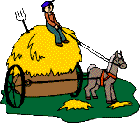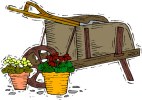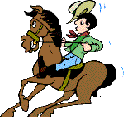Catch The Spirit of Arizona Red Rock Country home |
OH Arizona | My/Our Story | Aviation Then and Now | Airline Photos | Brief Sedona History | Movies and Movie-making | Cowboy Roundup | Wild Life | Wild Life Photos | Did you know? | Arts We Have Loved | Wedding Photos | Bird Watching | Photo Page | Monument Valley | Palatki Visit | For NATE | For NATE page 2 | Red Rock Chapbook | What's Happening? | Gardening & Conservation
               |
GARDENING & CONSERVATION
NEW--TO ME--Bioscape, Inc. Safe, organic products for controlling plant and lawn diseases, weeds, and insects. Check out their website!!
Table of Contents for This Page
|
|||||||||||||||||||||||||||||||||||||||||||||||||||||||||||||||||||||||||||||||||||||||||||||||||||||||||||||||||||||||||||||||||||||||||||||||||||||||||
Our View
Moving to Arizona from the Midwest was a shock to our gardening instincts. Not only had we been accustomed to sprinkling and hand watering plants, but using chemical sprays on a regular basis. Somewhere along the way, we realized our health had been jeopardized by exposure to pesticides and herbicides.
|
||||||||||||||||||||||||||||||||||||||||||||||||||||||||||||||||||||||||||||||||||||||||||||||||||||||||||||||||||||||||||||||||||||||||||||||||||||||||||
The Arizona landscape is naturally an arid one. Why is it new residents attempt to repeat the same choices and mistakes that had formerly been part of their lives? They plant trees that would do better in Illinois or Indiana.They attempt to grow flowers and vegetables that stifle in the heat and quickly wilt in the dog days of summer. And, they wonder why their gardening efforts are not rewarded.
|
||||||||||||||||||||||||||||||||||||||||||||||||||||||||||||||||||||||||||||||||||||||||||||||||||||||||||||||||||||||||||||||||||||||||||||||||||||||||||
It took us a while to recognize the value of the word "indigenous." Then, we sought books to guide us in making "indigenous" selections. But, where were those books? There were general texts relating to Southwest gardening. But, until recently, I had not seen any well-organized good pictures with understandable descriptions of the plants growing in the Sedona area.Then, we discovered Doug Von Gausig's web site Naturesongs. If only the Internet and its seemingly bottomless pit of information had been accessible to us years ago. Doug gives us a "Plant Guide," as well as "Bird Songs," to aid us in becoming familiar with this area's birds and their preferred habitats. But, even if one isn't a bird watcher, it is helpful to recognize some of the native plants and birds, one way or the other, and for whatever reason.
No, we haven't used straw for mulching here, and we haven't fed any hay to the animals; but we have added a compost bin, which has had occasional useage.
No more weed sprays. I remember down-wind flowers quickly folding, when dandelions were sprayed on our lawns in the past. I cringe, thinking about it. These days, I note the toxic smell of chemicals, when well-meaning neighbors have their yards' weed grasses sprayed on a regular basis. I also note how cacti and yucca in those yards become mottled or yellow and occasionally die from their proximity to the heavy doses of herbicides. I shudder that because we are downhill in many cases from the spray runoff, our lives and plants are in jeopardy. Yes, we are breathing the air polluted by those toxins too. What about the helpless birds and animals having their food sources, water, and air poisoned, because many people are more concerned about weeds and community esthetics, than protection of life?
|
||||||||||||||||||||||||||||||||||||||||||||||||||||||||||||||||||||||||||||||||||||||||||||||||||||||||||||||||||||||||||||||||||||||||||||||||||||||||||
New Choices
Andy Lopez: The Invisible Gardener Check out his web site. Not only will
Andy teach you how to make your own non-poisonous sprays, but how to feed your plants the healthy, natural way. I quote from his web site. "The Invisible Gardeners of America was started by Andy Lopez (The Invisible Gardener) in 1972 as part of a school he started known as The Living Institute of Survival Technology© or The LIST. Since 1972, Andy has help thousands of people understand Natural Pest Control methods, Composting, Rock Dust, Organic Gardening and much more! He has been seen on National TV from PBS The New Garden Show to ABC Home Show. He has been heard on radio since 1972 on one radio station or another. On KPFK from 1986 to 1995 and is a guest on many radio shows across the country."
----------------------
The following repellant sprays should not make us sick. Some are recommended by The Invisible Gardener. He has recommendations on his site and in his books for killing ants, termites, mosquitoes, common garden pests, and more. But, he tells us: begin by improving the soil with compost/humus, aerating, and providing good irrigation/drainage.Then, mulch with natural products. My recommendation (if using decorative rock around plants) is to put a layer of organic mulch beneath the rock. Remember, healthy and "cool" plants can better avoid disease and damage from harmful insects.
I believe we can all give our trees and bushes a boost by washing them with a power spray of water every few weeks. Not only will it wash off accumulated dust and pollen, but also spiders and other insects. But, before applying even a "natural" spray repellant to trees and shrubs, first power spray them with water and allow to dry. I recommend you not apply sprays other than in late afternoon or early morning.The Arizona sun will burn tender foliage readily, but especially when wet.
|
||||||||||||||||||||||||||||||||||||||||||||||||||||||||||||||||||||||||||||||||||||||||||||||||||||||||||||||||||||||||||||||||||||||||||||||||||||||||||

|
||||||||||||||||||||||||||||||||||||||||||||||||||||||||||||||||||||||||||||||||||||||||||||||||||||||||||||||||||||||||||||||||||||||||||||||||||||||||||
Controlling 4-legged pests
Deer love to move into our yards and gardens, especially when there are drought conditions. Late afternoons and mornings seem to bring out their appetites for Bloomquist appetizers.Try not to plant shrubs and flowers known to attract deer. Why plant vegetation, which requires chemical pest control? Not only are chemical sprays bad for the environment, but they wash off with rain or sprinkling, and need to be reapplied frequently.
Trial and error. Our history with home remedies has met with limited success. We have tied bags of human hair to trees and shrubs. Once when I put shaved Dial soap into bags made from nylon stockings, which I then tied onto sticks, I later found the sticks pulled out of the ground, and tossed onto our walkways. I guess we know what the animals thought of our soap idea! However, I took heed. After I securely tied the bags to tree branches, it seemed to slow down the deer traffic. It wasn't quite so easy for them to be removed! I haven't found a supply of bear dung anywhere or I'd use it to discourage javalinas. We have put out saucers of beer to discourage slugs.The saucers have quickly filled with drowned slugs, so either the slugs got drunk and drowned, or the beer destroyed their digestive and/or nervous systems!
It is not practical to fence plants or yards. Many animals will jump over the fences or dig under them. The best solution is to plant ornamental shrubbery that discourages deer from getting too close. Sometimes, just surrounding a bed of roses with holly plants, barberry, Japanese roses, or junipers will discourage deer. They will go where the feasts are more readily available without risk or unpleasant scent (to them anyway). Of course, you may not be able to get near your roses without risk to yourselves, if the holly or barberry becomes too dense! Deer will look for readily accessible new growth, wherever it is. But, scent camouflaging with plants is something to consider (if you still want roses), but need to discourage deer.
Planting ornamental plants that deer do not like to eat is probably the best solution to discourage deer browsing. But, our experience has been that deer will eat almost anything if they are starved or thirsty. The more drought, the more all your plants are at risk. And of course, your irrigation system is always an attraction for them during drought, because all animals will be attracted to water and plants receiving it. We have often had irrigation lines and emitters chewed. We have also had ornamental plants crushed, when deer used plants as mattresses or pillows. Deer antlers will damage tree trunks and other plants.
Suggestions for discouraging deer smorgasborgs.
|
||||||||||||||||||||||||||||||||||||||||||||||||||||||||||||||||||||||||||||||||||||||||||||||||||||||||||||||||||||||||||||||||||||||||||||||||||||||||||
|
||||||||||||||||||||||||||||||||||||||||||||||||||||||||||||||||||||||||||||||||||||||||||||||||||||||||||||||||||||||||||||||||||||||||||||||||||||||||||
The following web site in Texas has a well-organized chart to guide gardeners, who are attempting to plant less-appealing vegetation for 4-legged animals.
Deer-resistant Plants (not deer-proof)
I believe it is worth your time to study that plant guide chart. Perhaps you know of additional plants that deter animals from grazing in your yards? Please share your ideas in the Guest Book or Contact us by e-mail. The practice of "camouflage planting" should be studied and used by everyone making an effort to avoid toxic chemicals. The animals are first discouraged by plants that the animals perceive as having unpleasant scents, and then by taste, and physical discomfort. I believe we should all study the lists of indigious plants for our particular areas first, then plant vegetation, which will not outgrow its boundaries or cause undesirable effects to the environment. We are probably all familiar with the seeding and spread of undesirable plants, originally intended to make a positive contribution. The Russian Olive tree and Willows, for instance, are extensively planted in some states, yet they can become intrusive and objectionable, if planted in the wrong places.
The Naturesongs web site has excellent photos and descriptions of plants growing naturally in the Sedona and Verde Valley areas of Arizona. Of course, that does not mean that all those plants are desirable for propagating. For example, we are not fond of the Catclaw family, although the birds love them. We will attempt to please the birds in other ways.
The Invisible Gardener encourages the use of electronic instruments for programming animals to stay away. Stores, such as Sharper Image have such products. I recently saw the "Sonic Mole Chaser" advertised. However, he made an interesting point, that continuous usage can alter their effectiveness. The animals can become accustomed to the mild shocks or unpleasant sensations!
DEER-OFF
The product, DEER-OFF is recommended by the Invisible Gardener. DEER-OFF is advertised as a natural product, which can be purchased in a concentrated quantity to spray hundreds of trees and bushes. Its effect lasts several months, even with rains and sprinkling. I have read that it is available at most garden centers, as well as through its web site. Although, we haven't personally tried the product yet, it is being enthusiastically recommended by others.The following information is from the DEER-OFF web site.
|
||||||||||||||||||||||||||||||||||||||||||||||||||||||||||||||||||||||||||||||||||||||||||||||||||||||||||||||||||||||||||||||||||||||||||||||||||||||||||
What Else Can We Do?
I recently read a letter in a newspaper that made suggestions on how we might improve the environment. I have added some of my own!
Stop buying clothing that requires dry-cleaning
Purchase and use bio-safe products in our homes and gardens
Purchase bird seed that is organically produced
Support local organic growers and boycott companies that are major environment offenders
Buy and use hybrid cars instead of gas-guzzling sport-utility vehicles.
At least: plan your driving errands more efficiently, make shopping lists, consolidate your errands
Become an activist with an environmentally-benefiting goal; speak up, write letters
Think before you act to harm the environment in any way
If you must smoke, think of all the people you affect by the habit (polluted air, fire risk, tax dollars?)
Dispose of all smoking materials properly--no more cigarettes tossed out of car or truck windows--report offenders
Protect the animals and ourselves by judious use of all chemicals
Plant flowers and shrubs that provide nourishment for birds throughout the year
Educate yourself and your family regarding alternative choices
Many people like to tell us that chemicals are essential to the country's $1-billion agriculture industry. How was it that farming was done without chemicals for hundreds of years? The organic farmers today are answering a need. Perhaps, the consumers need to demand more organic products? Perhaps chemical usage is essential for maintaining the high profits of agriculture-business chief executives; but at the expense of health to fieldworkers, consumers, and those employed in the production of toxic chemicals?
EPA
Conservation and protection of our environment should not be left to the EPA. If we do no more than curtail our personal use of chemical sprays and write letters to our congressmen, and EPA offices, to voice our concerns, we may make a difference.
Here is a web site, which addresses some of our concerns about pesticides and use of other toxic substances. However, it leaves me feeling vulnerable.
The information expressed on this web site worries me. I believe the warnings are too mild, the information too liberal. Who are we really protecting? Even if one were to follow their recommendations to the letter, it seems to me the consumer is still very much at risk.
The EPA is a vast organization with many departments, divisions, and subdivisions. There are departments monitoring each other, and many of their duties and responsibilities read like Greek to the this layperson. The question is this: whether they are protecting our environment or not, what can an individual do to help? Common sense should tell us that any and all exposure to toxic chemicals is cumulative. Unless we do everything possible to protect our environment, our mistakes will eventually catch up with us. Yes, some people have a better gene pool than others and are less susceptible to toxic chemicals. But, even the healthiest person has a vulnerable immune system, which will ultimately be damaged. Self abuse in many forms is prevalent, but for the persons who seek to do otherwise, their continuing involuntary exposure to foods, water, and air that have been contaminated or altered by repeated abuse is discouraging and most alarming. And--what the EPA says is safe for adults and children, may not be safe for all adults, children, and wildlife.
Here is one address:
Mailing Address:
US Environmental Protection Agency
Office of Pesticide Programs (Division Mail Code)
Ariel Rios Building
1200 Pennsylvania Ave. NW
Washington, D.C. 20460
Here is another:
US Environmental Protection Agency
Office of Pesticide Programs
Public Regulatory Docket (7502C)
Ariel Rios Building
1200 Pennsylvania Ave. NW
Washington, D.C. 20460
The FIFRA Docket for the Office of Pesticides Program is a resource maintained to provide the public with access to pesticide related information produced by the EPA. Four individual dockets, the Federal Register, Registration Standard, Special Review, and Special Programs dockets, house regulatory notices, background documents and public comments on OPP activities.
Our Law makers
We elected them to office in order to protect our interests. What is more important than our health and environment?Tell them what you think.Tell them how you believe your concerns should be addressed and regulated.The following web sites should give you a list of addresses for your current elected officials.There are web sites for other related interests.Tip: A search engine can lead you to a particular bill, by description. My favorite search tool heads this list.
Lists of Law-making and Related links
HCMI (Heartland Communications & Management, Inc.) Who does what on Capitol Hill. There is a warning that information is not kept up to date.
HCMI ("The Art of Persuasion") Letter writing guides for contacting your elected official!!
How to E-mail Tells your elected officials what they need to know about you and your concerns, when you send the e-mail by its automated form.
Thomas--US Congress on the Internet Search for current legislation--bills on the floor,etc.--seems to have up-to-date information
United States Senate Lots of information here, including senate history, web site addresses for your senators and representatives, and even some of the spouses
Write to Congress (finding your representatives by your zip code)
List of Gardening--Conservation, and Related links
(some previously discussed)
Allergy-Free Gardening Thomas L. Ogren, (author, teacher, husband, horticulturist, and champion of an environment with less or fewer pollens), wrote this book to educate others and help improve the air for his allergy suffering wife. Like the industries and people that persist in the use of dangerous chemicals, many are reluctant to make changes in the what and how our landscapes are managed.
Alternative Medicine Its next issue to showcase Thomas L. Ogren and his book Allergy-Free Gardening.
Bioscape, Inc. A natural and safe choice! After battling aphids and diseases on our two rose trees the past few months, this looks to be the answer we were seeking!!
Gardening the Desert of Southern New Mexico I have read that Sedona growing conditions are similar.
Green Peace With action alert network, attempting to stop the GMO (genetically modified organisms), as with Kellogg's using corn genetically modified in their cereals. Trying to determine which companies are said to be involving consumers with "risky food experiments." Trying to stop global polution, and global warming.
Parkside Action Network North America (PANNA) Advancing alternatives to pesticides worldwide
Poisonous Plants This web site from Colorado State University has an excellent search capability and great pictures. If you want to know more about many common weeds, this is a good place to check them out.
"Sedona Gardens" by Kathy Wetzel (from electronic edition of Sedona Spectrum) I enjoy Kathy's stories about gardening in Sedona! She gives you her perspective regarding allergies and Sedona gardening.
Please share your ideas in the Guest Book and/or Contact us by e-mail.
|
||||||||||||||||||||||||||||||||||||||||||||||||||||||||||||||||||||||||||||||||||||||||||||||||||||||||||||||||||||||||||||||||||||||||||||||||||||||||||


